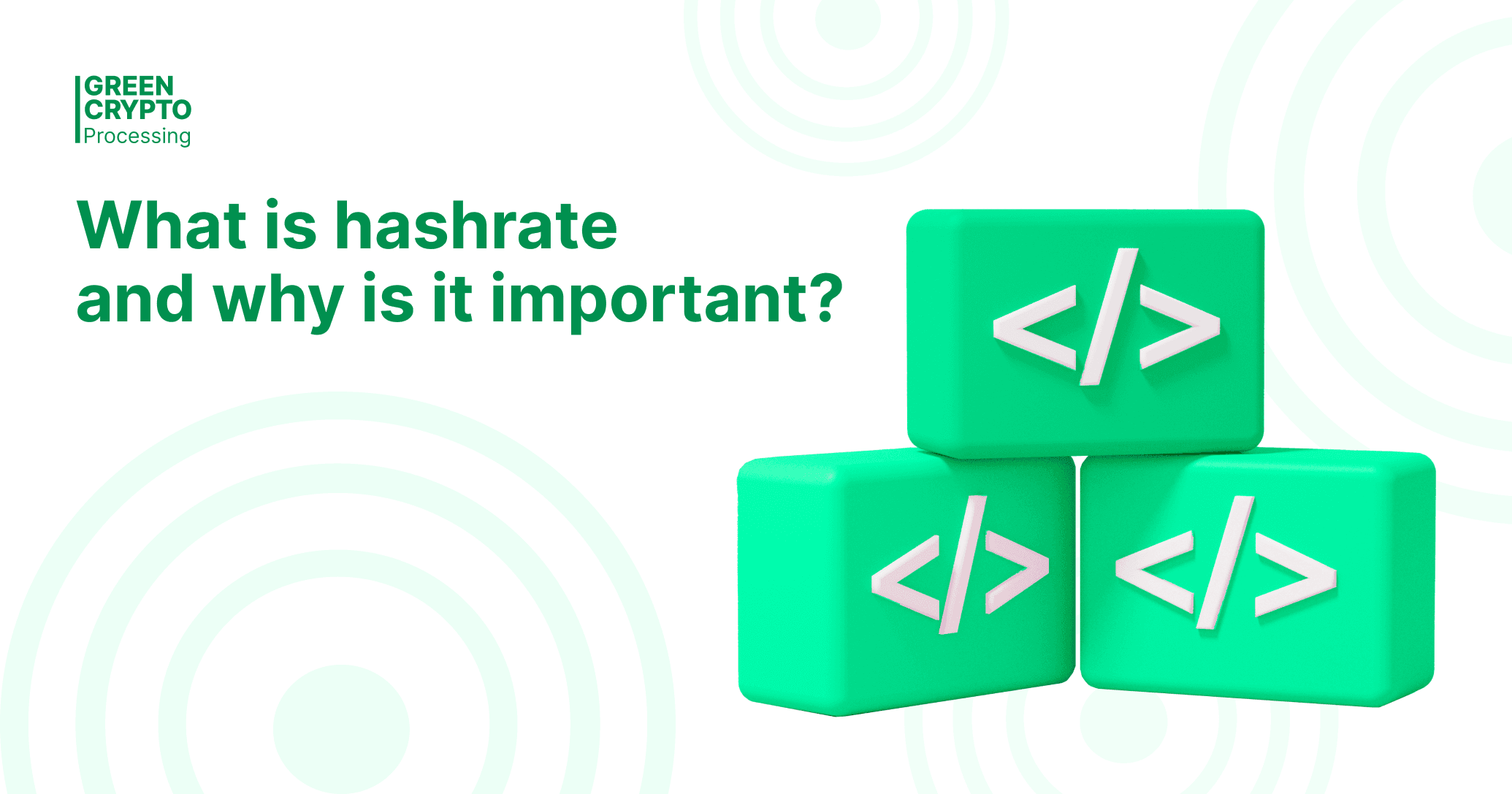Blog
The only way to get cryptocurrency is mining, which is the process of checking transactions and creating new blocks in the blockchain. Mining is based on the calculation of complex mathematical problems, which requires high-performance computer processors and a high hashrate - the power at which these computers perform the calculations.

What hashrate exactly is and why it is so important — the subject of this article.
Why is hashrate important?
Bitcoin, like some other blockchain networks, is based on the Proof of Work (PoW) algorithm, which is responsible for validating transactions. This process requires a number of complex tasks to be performed until a valid result - a hash - is created.
The process of generating a valid hash is random and requires millions of calculations, making computer speed a key factor in mining. This speed is referred to as the hashrate.
Thus, the higher the hash rate, the higher the probability of creating a valid hash and validating the transaction.
Hashrate is measured in units of:
- 1 kilohash per second (1KH/s): 1 thousand calculations per second;
- 1 megahash per second (1 MH/s): 1 million calculations per second;
- 1 gigahash per second (1 GH/s): 1 billion calculations per second.
Hashrate is a key indicator of blockchain network security because it is a rough estimate of how secure the blockchain is against potential hacker attacks or scams. As the number of miners on the network increases, so does the hash rate, making it more difficult for fraudsters or hackers to attack the network. In addition, the higher the hash rate, the harder it is for an individual miner to gain control of a larger part of the network.
What is bitcoin's current hash rate?
Bitcoin's hash rate has reached an all-time high of 281.79 TH/s. This means that the processing power of the network can run 281.79 trillion calculations per second.
Why does the hash rate change?
Usually mining is a capital-intensive process that requires equipment, electricity, manpower, maintenance and time. Therefore, miners are rewarded with new cryptocurrency units for each successfully mined block.
If the hash rate is high, the mining difficulty increases and more energy is required to verify the block. At the same time, a lower hash rate leads to less difficulty and requires less energy to verify the block.
Thus, the difficulty of mining and the cost/profit ratio are key metrics for miners when choosing the cryptocurrency they want to mine.
Hence this dynamic causes the hash rate to change over time.
What is mining difficulty?
Mining difficulty, which is closely related to hashrate, is a metric that indicates how difficult it is to mine a particular blockchain.
The more miners come over time, more hash rate becomes available, making mining more competitive, difficult and expensive.
This leads to longer block confirmation time and can eventually make the blockchain unusable.
To avoid this, the mining difficulty is adjusted by the blockchain periodically to accommodate changes in hash rate.
Thus, the difficulty of mining increases or decreases depending on the number of miners and the total hashrate.
Understanding what a hashrate is, as well as using the most profitable mining strategies, allows crypto enthusiasts to save personal time and resources of their equipment, as well as increase their income significantly.